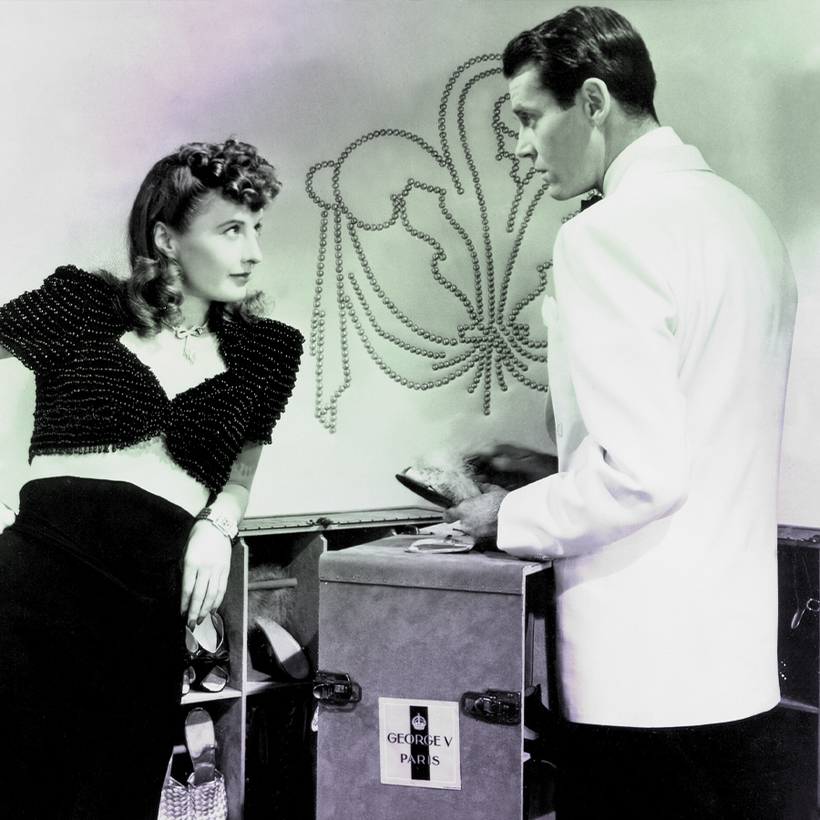Two decades before Andrew Sarris coined the term “the auteur theory,” Preston Sturges was arguably the first and foremost auteur of the talkies. By the end of 1942, he had already directed five films from screenplays he had written, The Great McGinty, Christmas in July, The Lady Eve, Sullivan’s Travels, and The Palm Beach Story—all as efficiently engineered for maximum joy as a windup toy, all now rated as classics.
Frank Capra was every bit as prolific, but he relied on screenwriters, most often Robert Riskin, for his scripts in that era. Alfred Hitchcock, too, imposed his authorial imprint primarily through the camera, leaving the writing to others. Orson Welles was gearing up to give Sturges a run for his money, but his momentum as a mainstream filmmaker was thwarted when his follow-up to Citizen Kane, The Magnificent Ambersons, was butchered in its editing phase by RKO Pictures while Welles was in Brazil fulfilling his duties as a U.S. goodwill ambassador.
Yet for some reason, Sturges doesn’t get the love from the general public that Capra, Hitchcock, and Welles do. He is by no means obscure—New York’s Film Forum just wrapped up a snappy retrospective, “Written and Directed by Preston Sturges.” But Sturges is forever the connoisseur’s choice. I can think of no greater evidence of this than the Coen brothers’ frequent tributes to him in their work, most obviously in their lifting of the title O Brother, Where Art Thou? from that of the solemn social-realist film that the protagonist of Sullivan’s Travels, John L. Sullivan (Joel McCrea), wants to make instead of the goofy comedies that are his stock-in-trade.
So it’s nice to see the Sturges oeuvre lovingly worked over by the critic Stuart Klawans, formerly of The Nation, in his new book, Crooked, but Never Common: The Films of Preston Sturges. As he cheerfully notes in his introduction, “Its goal is to increase your pleasure in Sturges by following the trains of thought, ambiguities, and semicovert artistic impulses that emerge in his films on a second viewing, or a fifth.”
Because Sturges oversaw his movies from the typewriter to the editing suite, these films bear the same authorial stamp as a work of literature—“They can be read,” Klawans writes—and the author presents himself as your fun, lively lit-crit professor.

To be clear, this book is not a good entry point for newcomers to Sturges, who will get lost in the weeds of plot summary and textual analysis. Even as a reader who has seen all 10 of the films discussed in Crooked, but Never Common, I benefited from a refresher viewing of The Lady Eve, which lends the book its cover image, of Henry Fonda’s brewery heir woozily succumbing to the advances of Barbara Stanwyck’s card sharp. Prior to re-watching the movie, I found some of the Lady Eve chapter hard going, but after watching the film for the second—or fifth?—time, Klawans’s words sprang to life like a sponge reconstituted with tap water.
Fonda’s character, Charles “Hopsie” Pike, specializes in the study of snakes, making him, by trade, an ophiologist. Sturges wrings bucketloads of comedy out of that word alone, most delightfully in Hopsie’s rambling, borderline-incoherent marriage proposal to Jean, Stanwyck’s character: “What I’m trying to say—only I’m not a poet, I’m an ophiologist—is that I’ve always loved you. I mean, I’ve never loved anyone but you. I suppose that sounds as dull as a drugstore novel, and what I see inside I’ll never be able to capture into words. But that’s what I mean.”
I’d always loved that speech for the way it indicts Charles as a guileless rich boy, a deserving mark. But Klawans makes the case that Hopsie is shrewder than he appears to be. “It’s been evident from the outset that words come easily to him,” he writes, citing a later windy speech in which Charles likens himself and Jean to “figures following each other in a forest glade.”
“These figures he proceeded to describe in detail,” Klawans writes, “until a close-up of Stanwyck, shown in the softest, most melting light, revealed just how little Charles sounded for the moment like an ophiologist.” When Charles recycles his clumsy “drugstore novel” speech for a second marriage proposal—this time to Jean’s alter ego, the purported society heiress Eve—it’s evident, Klawans argues, that The Lady Eve’s nominal innocent is ultimately every bit the cynical manipulator that its temptress is. (Should you need a reminder of the second proposal scene, it’s the one where Fonda’s attempts to tenderly nuzzle Stanwyck keep getting interrupted by a horse bent on tenderly nuzzling him.)
Crooked, but Never Common brings new perspective to old movies that are in many minds better remembered for their motley assortments of expertly deployed character actors—among them William Demarest, Franklin Pangborn, Jimmy Conlin, and Eugene Pallette—than for their depth and magnificent construction. In his final chapter, entitled “Instead of a Conclusion,” Klawans creates and rates a list of Sturges’s potential latter-day heirs, rejecting the Coen brothers for their “lack [of] a carnivalesque spirit” and suggesting Charlie Kaufman as the Sturges-iest contender on account of Kaufman’s “inventiveness with language and his daring in narrative construction.”
But, really, this very exercise is fruitless. Sturges was of his time in the best possible way: ahead of the curve, suave, and mustachioed like William Powell and Clark Gable, alive to the possibilities of sound pictures before nearly everybody else.

David Kamp is a Writer at Large for AIR MAIL and the author of several books, including The United States of Arugula: The Sun Dried, Cold Pressed, Dark Roasted, Extra Virgin Story of the American Food Revolution


